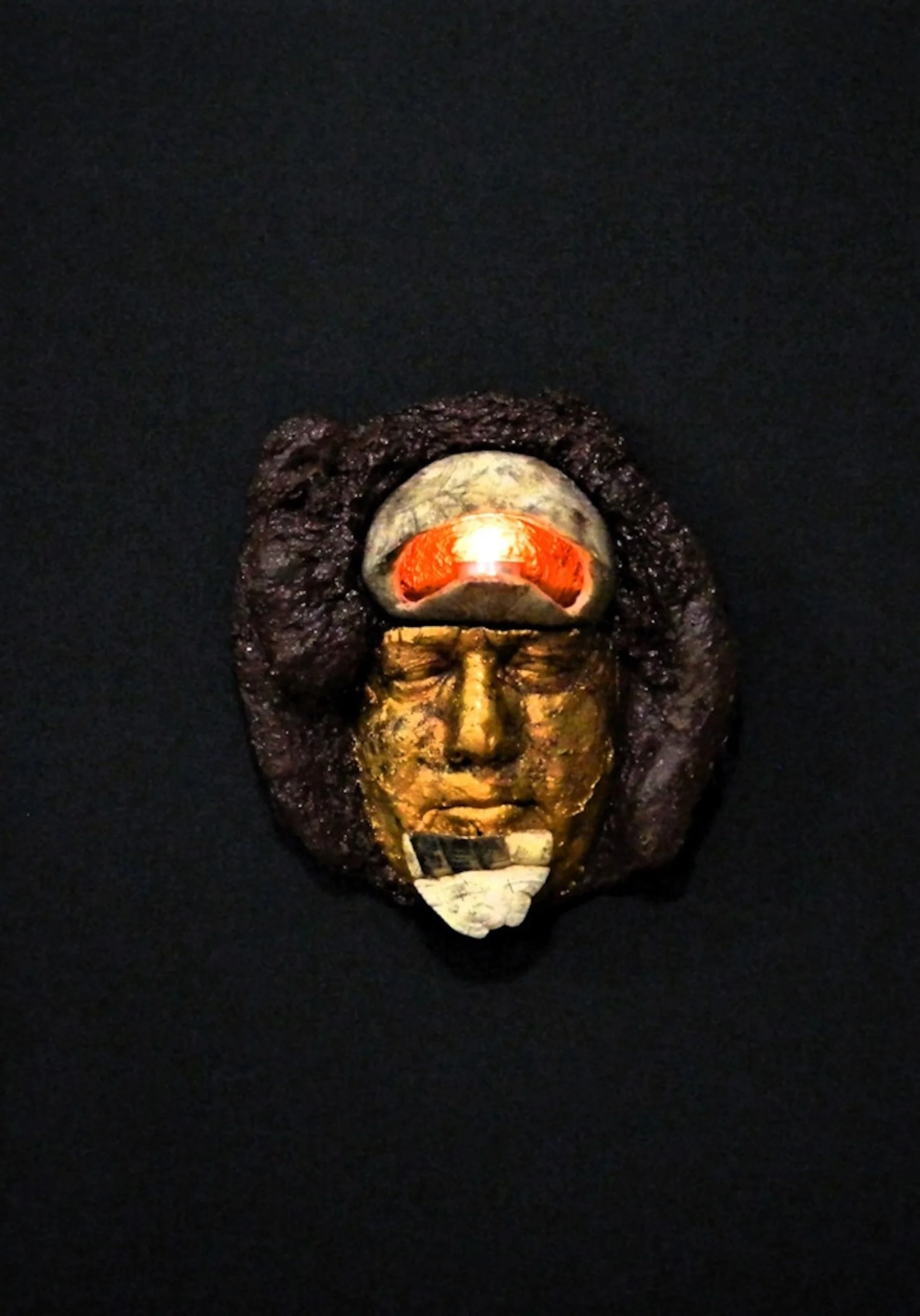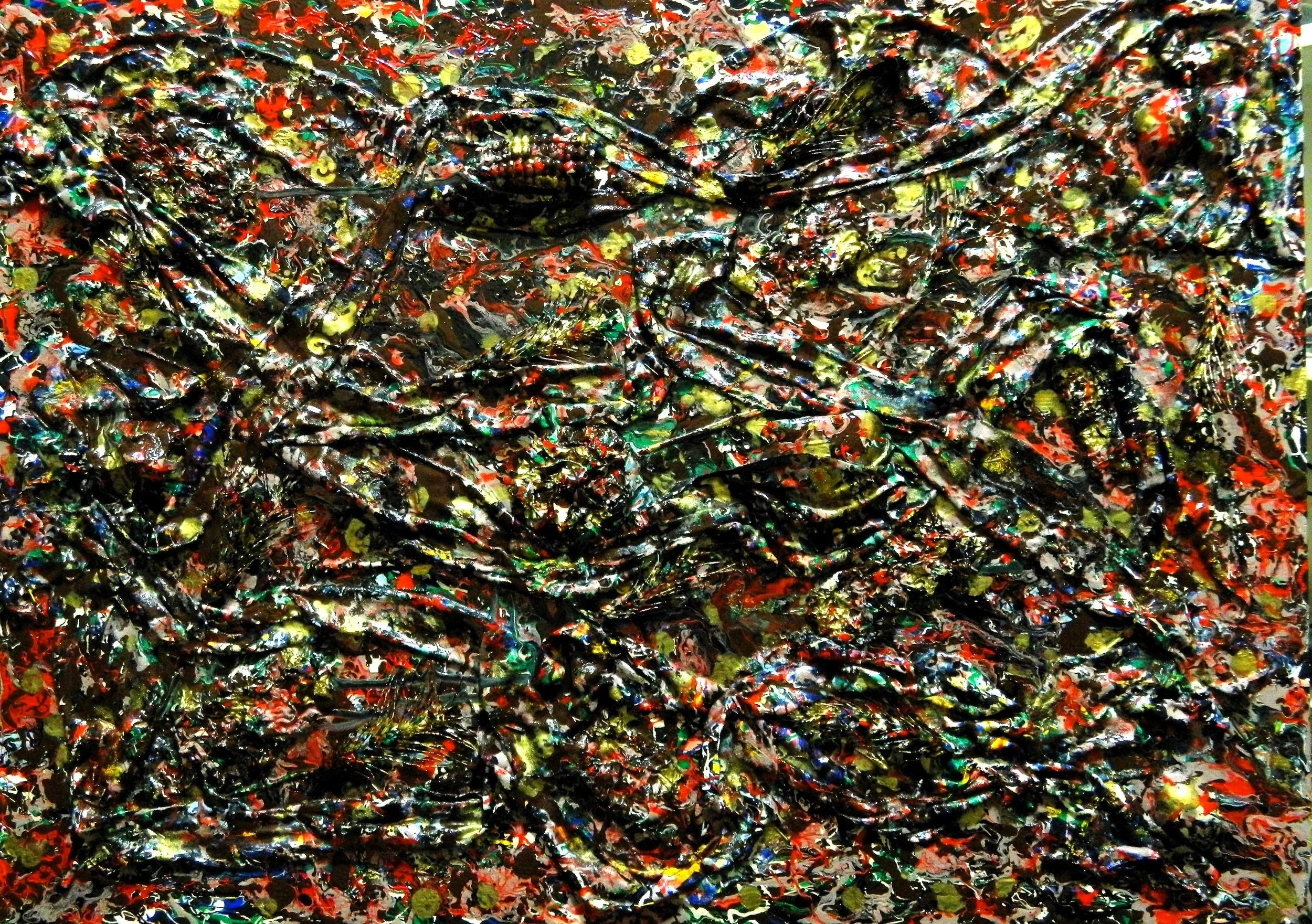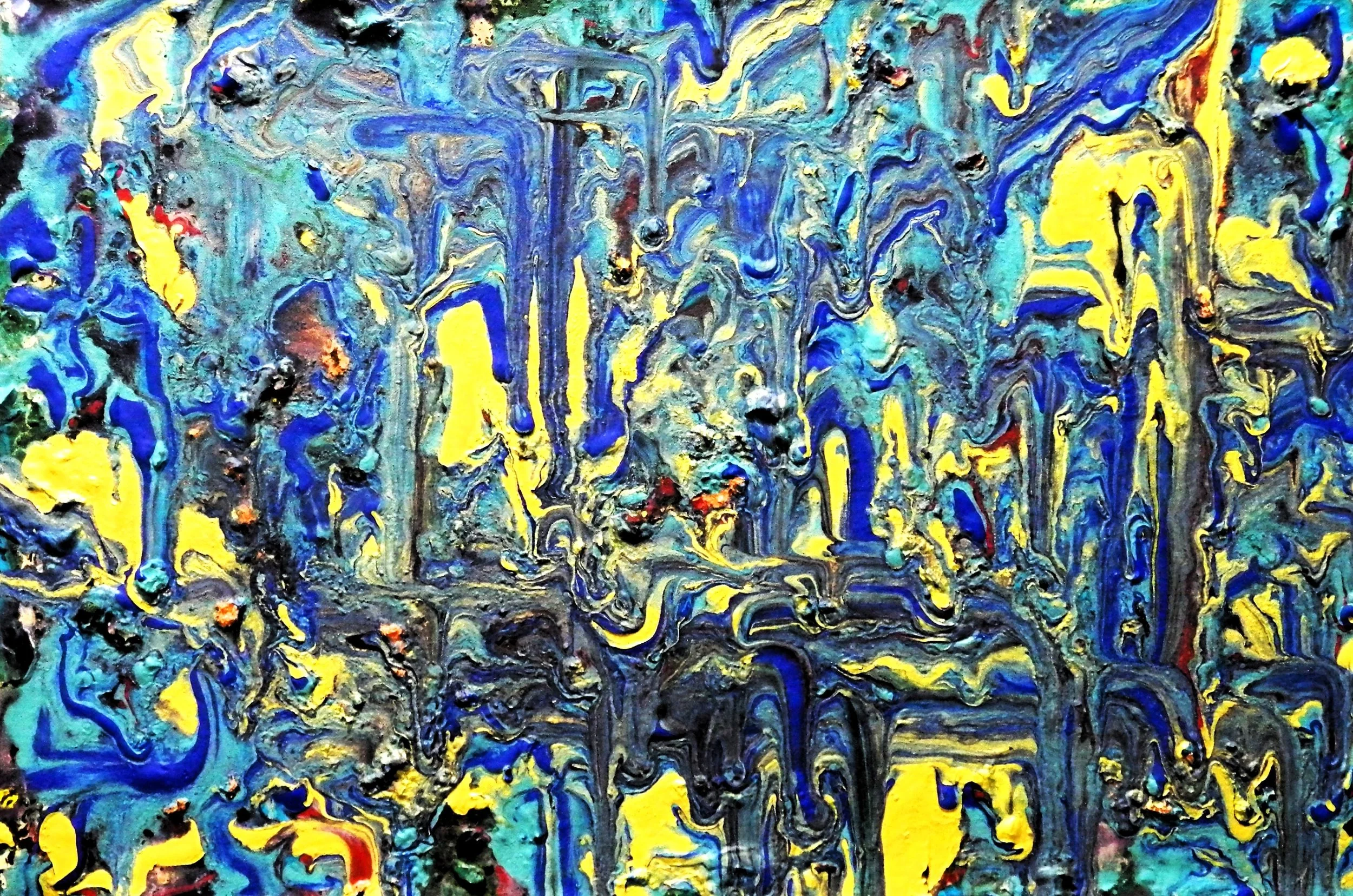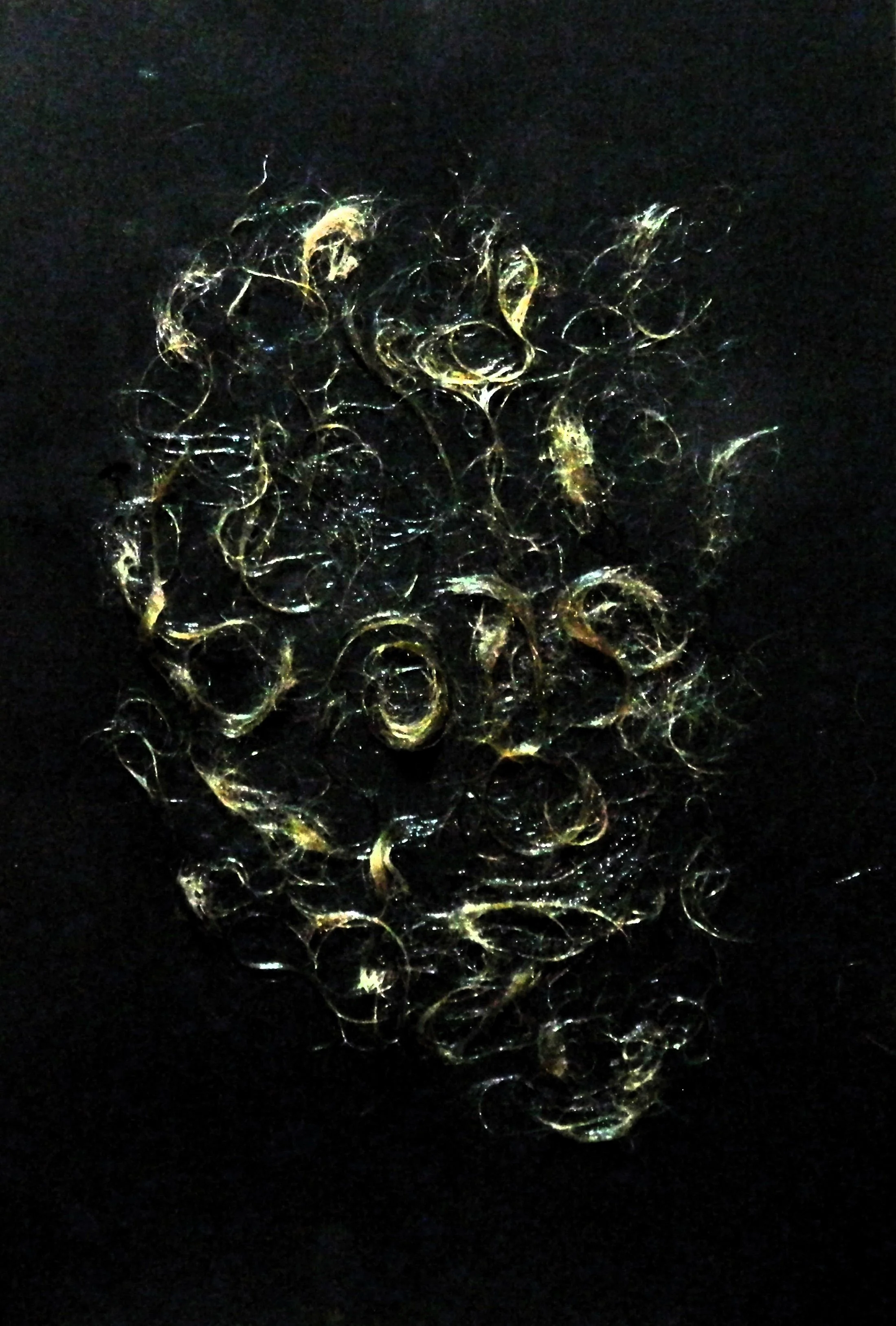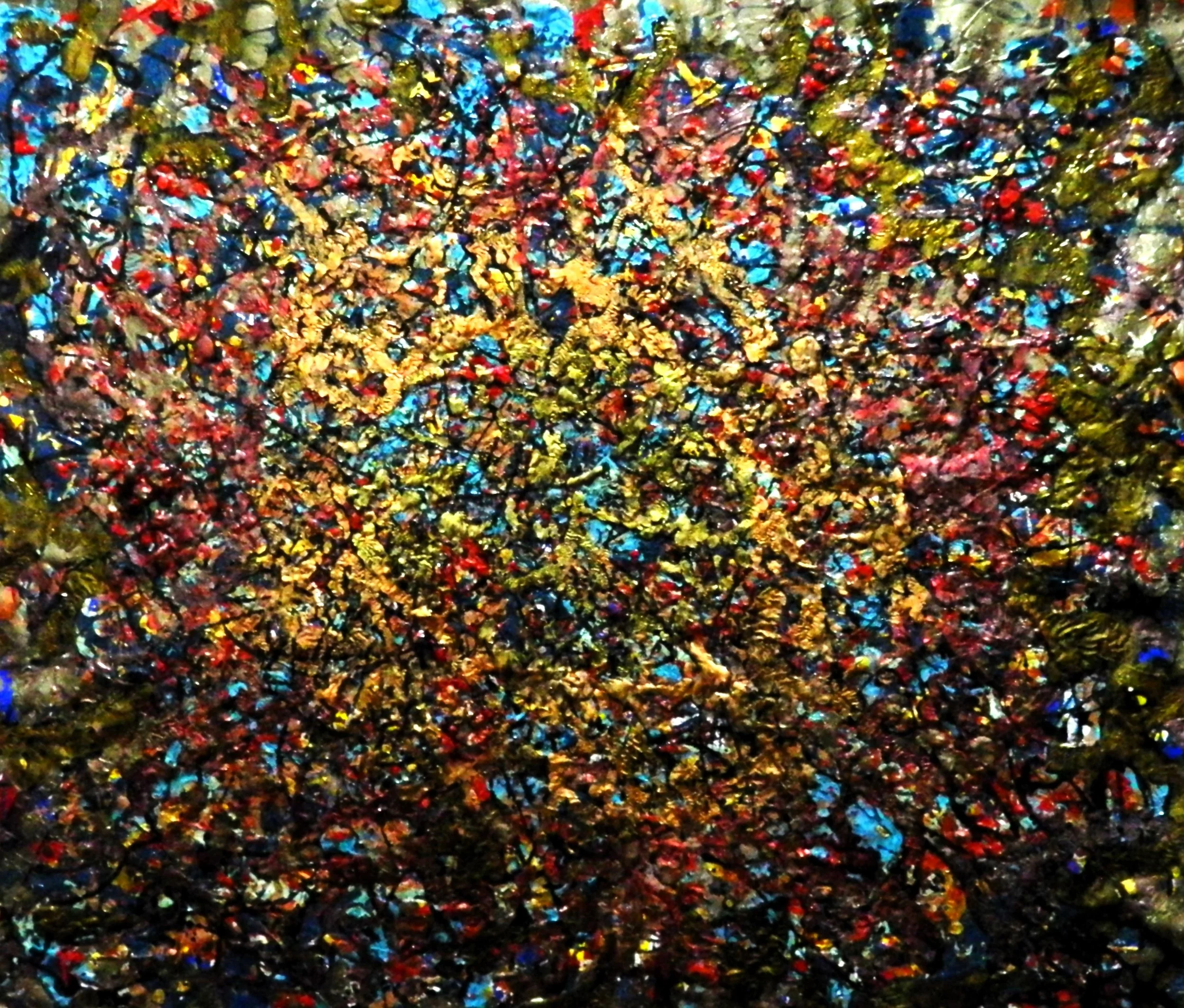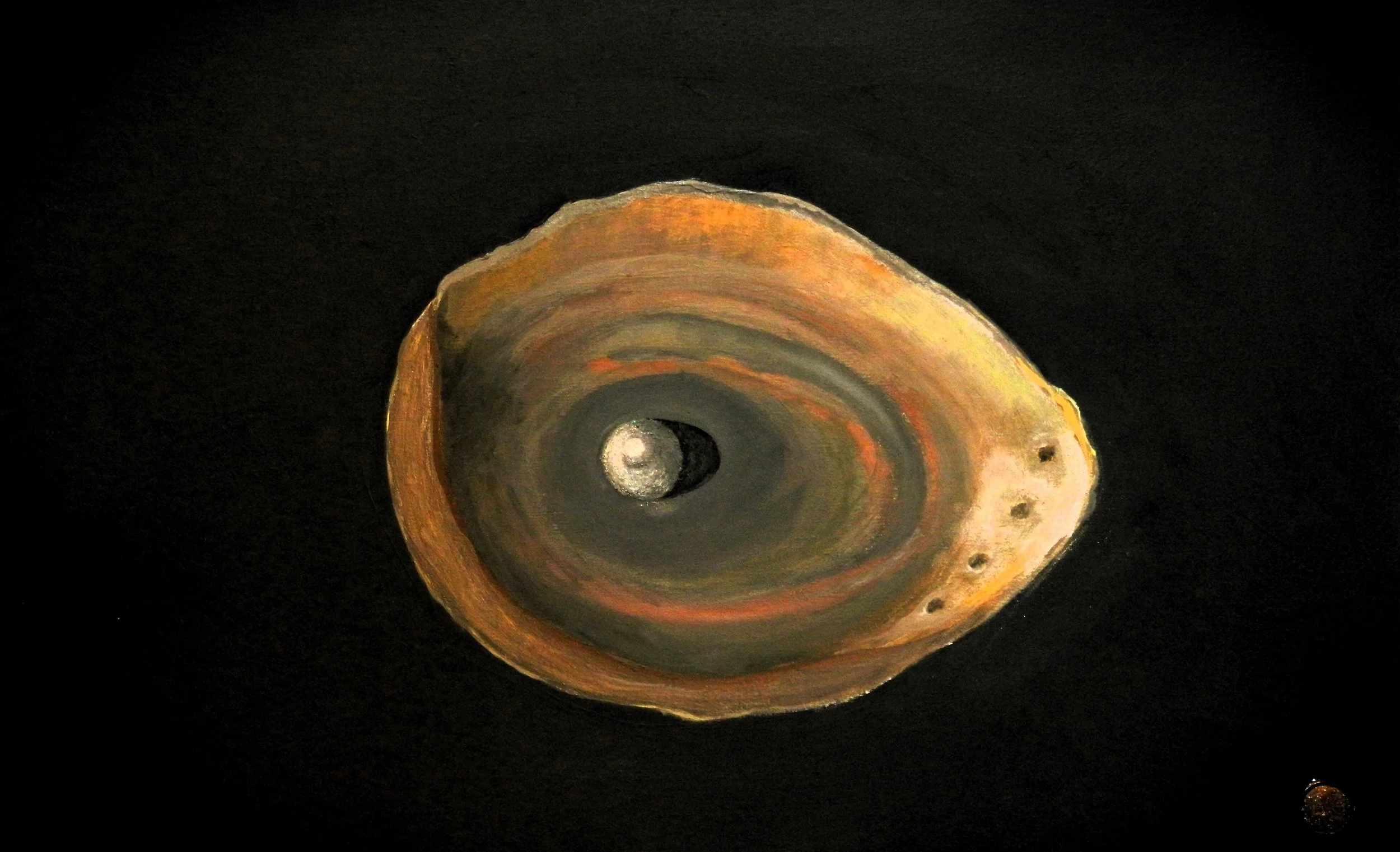Kenan K. (Koçak)
kenank.art
orukk.com
Instagram: kenank_art
Born on August 11, 1956, in Çorum, Turkey, he embarked on his artistic journey with oil painting in June 2006. For two years, he honed his skills under the guidance of Hızır Teppeev at an atelier in Ankara, dedicating his weekends to perfecting his craft. Currently, he works as a freelance artist in a charming, restored atelier that was once a house built in 1926. Located in Edremit, Balıkesir, Turkey, this space became his creative sanctuary in September 2010. Here, amidst a setting rich with history, he continues to explore and express his artistic vision.
Kenan, you began painting in your fifties, describing it as releasing the soul of a twelve-year-old boy who had been sheltering for years. Can you take us deeper into that emotional awakening? What triggered this creative reemergence, and how did that inner child shape your earliest artistic expressions?
Childhood is a pleasant period of fewer responsibilities, more freedom, tolerance of mistakes, understanding of spoiled behaviour, endless curiosity to explore life and learning through trial and error. After primary school, however, society may have shaped you according to its own cultural patterns, as you start higher education and enter work life. (This isn't just negative; it can be seen as a necessity for social adaptation.) Retirement brought an emotional return to my early childhood years, a spontaneous and quicker return than the gradual process of transitioning to adulthood. I am neither an expert nor in a position to explain why this happened, but I have noticed that it did.
I transformed a house similar to the one I grew up in into a workshop to create a special working environment. While I maintained 'adult' behaviours and relationships outside the workshop, when I was alone inside it, my inner child would emerge and play with paints and art materials. It was just the two of us. The child played his own game, while my mature/experienced side occasionally observed. The mature side would then use its knowledge of art (painting) to finalise the work.
As I wrote these words, I realised that the child was driven by a desire to relive the pure, natural state of life — perhaps even unlived experiences — as captured in the faded memories of maturity. I believe the extent to which this desire for purity and naturalness is reflected in the art lies with the viewer rather than the artist.
During these experiences, which took place in a calm and quiet environment, I experienced a sense of integration and self-awareness. At the time, I was unaware of the impact these experiences would have on my artistic creativity or their value in self-expression. To me, this seemed to be one of the most beautiful ways to experience “The Life” directly.
You speak of art as a way to “touch the lives of people” you’ve never met. How do you perceive the invisible thread between artist and viewer? Is there a specific moment or encounter that affirmed for you the power of that unseen connection?
I believe that art is about touching the lives of people you've never met within an energetic framework of connectivity. This approach is based on Tesla's understanding (which I have great respect for).
“Nikola Tesla believed that everything in the universe is connected through energy, frequency, and vibration, suggesting that understanding these concepts can unlock the secrets of the universe. His famous quote emphasizes the importance of these elements in comprehending the world around us.” inbornvoice.com Goodreads
With each passing day, the interconnectedness of everything becomes increasingly apparent. Perhaps the concept of quantum entanglement is manifesting itself in an expanding variety of shapes and forms.
“Quantum entanglement theory describes a phenomenon where particles become interconnected in such a way that the state of one particle instantly influences the state of another, regardless of the distance separating them. This concept challenges classical physics and is fundamental to understanding quantum mechanics.” Wikipedia spinquanta.com
Turning to the practical side of the topic, I can illustrate this with a few comments sent to my life project: Mythological Writing Essays (orukk.com). There is no advertising purpose here, and the senders' identities are kept confidential.
“- Greetings from Ohio! I’m bored to tears at work so I decided to browse your site on my iphone during lunch break. I enjoy the info you provide here and can’t wait to take a look when I get home.
This is a topic that is close to my heart… Thank you!
Hello my family member! I want to say that this post is amazing, nice written and come with almost all significant”
I believe this is a topic that pertains to art in general, not just one that is specific to me. As you read this, who knows what type of interactions are being experienced that remain unexpressed?
Your artistic journey is rooted in the concept of “Constructive Freedom.” Could you elaborate on what this means within your practice? How does it guide your choice of materials and techniques, as well as your deeper purpose as an artist?
Freedom is a broad concept, encompassing thought, expression, behaviour and movement. There are numerous studies and philosophical approaches, but its practical application in daily life is complex. The idea that your freedom ends where others' begins is useful, but not always practised. Freedom may be not about doing what you want or acting on impulses.
I have tried to establish my own criteria, focusing on the importance of constructiveness. I have conceptualised this as follows: if an idea, action or behaviour is harmful or destructive, it cannot be considered an exercise of freedom.
As for how this is reflected in my artwork, I have a couple of pieces that address the theme of freedom directly, such as “Feeling Like Birds”. However, the real application of freedom is the interaction of energies through art.
I believe that when you create art, your mood and energy are reflected in and stored within the work. When a piece of art meets an audience, communication begins based on energy and attraction, which works based on frequency compatibility. A frequency mismatch isn't necessarily negative — it's simply a matter of alignment. With this in mind, I try not to limit myself when working and strive to channel positive energy into my art.
My deeper purpose is to promote an understanding of freedom by distinguishing it from the exploitation that occurs in its name, which we may recognise as malpractice and mismanagement.
From mastering materials to exploring intuition, your process blends control and spontaneity. How do you navigate the balance between technical precision and emotional expression? Do you ever feel one must yield to the other, or do they coexist in creative tension?
To me, 'exploring intuitions' provides the foundation for my work and the creation stems from that. I sense that I am not the only one doing this, but mostly working with other energies where sometimes I become a channel for fulfilment.
Without technical precision, the work may not be considered as art which requires at least harmony and aesthetics to my understanding. Otherwise You could argue that this is 'my art', which may lead to an interpretation as 'what I do it becomes art'.
I don't control or regulate the balance between them. I prefer to let them flow naturally. When possible, as a matter of habit, I step back, take a look from a distance and check the overall process. Intuition and technique work together, sometimes within minutes and sometimes over the course of years, supporting and cooperating with each other accordingly.
You describe each of your works as an independent entity, a form that eventually speaks for itself. How do you know when a piece is finished, and how do you resist the temptation to impose too much of your voice once the work begins to speak?
In 2006, my teacher, Hızır, didn't like one of my pieces of work and washed it off immediately. He then kindly gave me a paintbrush and asked me to choose colours from the palette and paint as I wished. I repeatedly stroked the canvas until I heard a silent but clear voice telling me to stop painting. It said, "I'm done! No more strokes!' I replied, "I'll decide! Not you!' and stroked the canvas one last time. When Hızır returned, he pointed to the final stroke and said, 'Except for this one, the others are fine.' It was a scary experience for me, and it took me a while to get used to it.
After that day, whenever I felt the work was finished, I stopped. At first, my own (ego) voice dominated the painting's voice. After years of taming my ego and considering negative experiences, I finally learned to listen to the painting's voice, so to speak. Now, I listen to the work's voice instead of my own and do what it suggests.
In many of your pieces, especially those featuring heavy textures and layered abstraction, there seems to be a sense of excavation, like revealing something hidden beneath the surface. Do you see your work as a kind of psychological or spiritual archaeology?
I am grateful for your inquiry, as it highlights a key aspect of my work: its multilayered nature, which emerges organically.
Over time, as I became more introspective about my work, I encountered an interesting situation. As the paintings neared completion or were finished, various shapes and forms of people, animals or unidentifiable souls would appear on the surface mostly within abstract ones. These would change depending on the light the painting received. I allowed for the possibility that my fantasy world might be perceptual errors in my paintings, but I tried to make the observation as objective as possible. They were still there.
In response to your valuable question, I feel that I wasn't actually excavating, but rather preparing an excavation site waiting to be explored. Yes, the excavation site is spiritual. However, it seems to me that the impressions of those for who would excavate may also be psychological. I have no way of knowing how the painting would affect their state of mind and mood at that moment, but I believe that somehow there will be interaction in between for good,because the starting point of the production is pure. Another important issue here, in my opinion, is the degree to which the viewer is open while interacting with the work. The more open you are, the richer the interaction will be. All of these are subjective matters, and my limited assessments are based on my own experiences.
Your studio is housed in a restored 1926 building in Edremit, a space rich in history. How does the atmosphere and energy of that location affect your creative process? Is there a spiritual or symbolic dimension to creating in a place with its memory?
This is a very peaceful and quiet old house with a tiny garden where you can spend all day alone with your thoughts. When I first entered the house, I immediately sensed the positive energy surrounding it. Visitors also mention this as soon as they arrive. The fact that it resembles the houses where we spent our childhoods may be another aspect of its charm. Like a microclimate, this house creates an "ecological energy environment for art". The vine tree in my backyard produces delicious grapes in season. I believe the energy environment here has contributed significantly to the works. Note: I have been working from home for the last few years for practical reasons.
With numerous awards, including the Artist of the Year titles and the Global Art Virtuoso Award, your work has been recognized globally. Which of these honors has had the most personal significance to you, and how do you ensure that recognition doesn't eclipse the humble, soul-driven origin of your journey?
The Global Art Virtuoso Award is a very valuable, meaningful and significant award for me. As an artist, one of my basic needs is to share my Works via to be seen and recognised. This award provides motivation, driving you to work and produce again, especially when you are feeling down and questioning yourself. 'Why am I doing this?' I would like to express my most sincere gratitude for this unexpected and profoundly moving accolade.
If you have not prepared for it over a long period of time, ensuring that recognition doesn't eclipse the humble, soul-driven origin of the journey may not be easy. Nevertheless, if you adopt the mindset of 'never forgetting where you came from' (in terms of the initial struggles), you will have the necessary understanding to deal with it and avoid thinking that you are anything special. Perhaps more importantly, you must recognise that the success is not down to you alone, but is the result of teamwork involving external/outer influencers. Without the support of the others, I don't think I would be able to achieve anything. This enables you to continue as before and stay where you started.
Your works often defy easy categorization, blending painting, sculpture, and raw materiality. When you're beginning a new piece, are you driven more by a visual intuition, a tactile impulse, or an emotional question you’re trying to resolve?
The connection between the theme, the art, and the work's origins is perhaps more complex and uncertain. Venturing into the unknown, where the destination is shrouded in mystery, is like embarking on a journey of discovery. This process is characterised by a constant cycle of learning and growth, much like a baby's developmental journey. The journey unfolds through a series of trials and errors, gradually developing and refining skills and understanding. Pre-made recipes, forms and patterns cannot be applied linearly to visual works or narratives. There is no specific order that applies to everything, nor is one thing more important than another.
Imagine you are wandering through a field. You notice some discarded pieces of bone, branches, stones and soil, so you collect them. After a while, you find yourself captivated by these materials, driven by an impulse to start working with them. You arrange them on a surface, paint them and rearrange them until the piece is complete. Ultimately, a new creation emerges. This new piece evokes a different meaning for you, or you assign it a new one. As this association is enriched by others, you can create more pieces and multiply them.
Imagine that you dream one night and, the next morning, you paint a picture inspired by that dream. Later, you remember another dream from your childhood and add to your work. By blending these dreams with your thoughts and memories, you incorporate them into your creative process.
Imagine waking up early in the morning, at sunrise. This feels like the perfect time for inspiration, as if it's waiting for you to sense it as you start working on visuals.
Imagine, over time, the actions of the cats or dogs you observe, or of a mantis that climbs on you without warning or a spider that weaves its web in a secluded corner of the garden, end up making them actors in the story. Their behaviour may also inspire scenes in your imagination.
In short, all activities and work can be described as being somewhere between fully controlled and entirely random. The process is not linear, nor does it follow the usual sequence of thinking, designing, planning, executing, improving with feedback and repeating the process. It generally develops cyclically, moving forwards and backwards depending on the conditions and the overall situation. Perhaps the key lies in knowing when and where to take the control. It seems that involvement at these critical junctures is entirely related to energetic interactions and, specifically, dialogue with our inner voices. While I sense that these occurrences have been happening in due course, I am unaware of how the underlying dynamics work and interact.
Of course, the more you practise and gain experience, the broader your view of the concept and your understanding of your path will become. Developing your observational skills and shifting your focus from internal/subjective to external/objective within this process enhances your capacity for self-criticism and repositioning. The development, enrichment and proliferation of topics also influence your style and practice. Sometimes, separate pieces are connected or merged, bringing you closer to the bigger picture. However, as you unify these pieces, you also categorise and regroup them.
At this stage, it is important to emphasise the necessity of extensive reading, which naturally requires a significant investment of time and effort. As it is impossible to know or learn everything — attempting to do so is considered madness by experts — you must be selective and focused in your reading. The vastness of the topic can be intimidating at times, but you can find motivation to continue your journey by thinking of a tiny ant carrying its burden or a bee tirelessly flying from flower to flower.
In summary, you embark on a journey to see if you can have a positive impact on life in all its simplicity. You continue to track its ups and downs, its difficulties and ease, moving back and forth, but always moving forward. As you do so, you consider the possibility of a better world, if not today, then hopefully in the future.
You encourage viewers to let your artworks speak in silence and explore their adventurous music. What kind of emotional or philosophical journey would you like your audience to experience when encountering your work, and what role does mystery play in that journey?
As far as I can see, the desire to get rich quickly with little effort is rapidly developing in a world that is becoming crazier by the day, especially alongside the beneficial aspects of social media and the increasing allure of consumption. These desires, along with the other factors, are leading people to race against time. This reminds me of Stefan Zweig's book "Amok", and gives me the feeling that everyone is rushing somewhere. If I may, I would like to make a humble suggestion: 'Slow and calm down!' In the language of the painting, 'spare some time for me'. I'm not suggesting that viewers will experience tangible results, instant enlightenment, major changes or heightened consciousness. It is entirely up to them to engage with the work without prejudice. I can't predict the effects of this pure, unadulterated communication, as it is unique to each person and will be experienced only within their own soul.
My final words are for everyone: Wherever or whoever you are, 'You are the pearl'.

